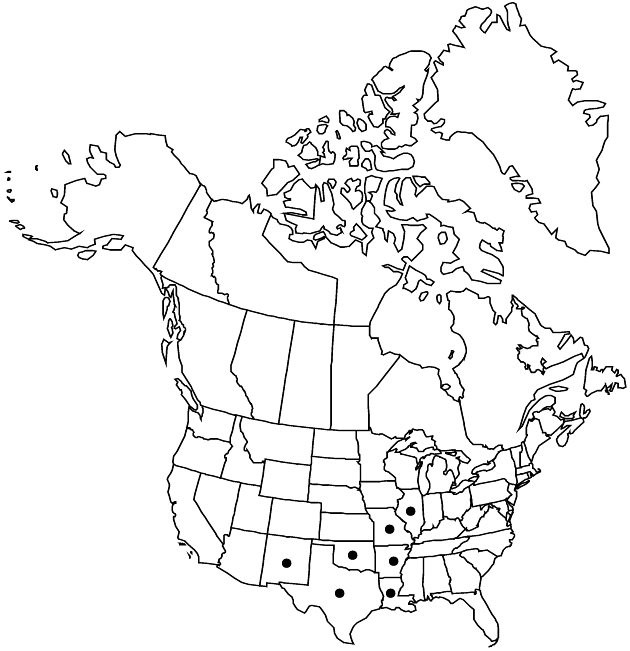Gutierrezia texana
Fl. N. Amer. 2: 194. 1842.
Annuals, 10–80(–100) cm. Stems glabrous. Leaves: proximal usually absent at flowering; cauline blades 1- or 3-nerved, linear, 1.5–4 mm wide, reduced distally. Heads in loose arrays. Involucres campanulate to obconic, 2–4.5 mm diam.. Phyllary apices flat. Ray florets 5–23; corollas yellow, 3–6 mm. Disc florets 7–48 (bisexual and fertile or functionally staminate). Cypselae 1.3–1.8 mm, faces without oil cavities, loosely strigose (hairs appressed, apices acute, microscopically 2-pronged); pappi of 1 series of spreading-erect, oblong to ovate or obovate scales 0.1–0.5 mm (bases sometimes connate, usually shorter in rays, sometimes 0 in var. texana).
Distribution

Ark., Ill., La., Mo., N.Mex., Okla., Tex., Mexico.
Discussion
Varieties 2 (2 in the flora).
Although the two varieties of Gutierrezia texana are similar, the geographic demarcation between them appears to be sharp, and a detailed investigation of their biologic interaction would be interesting.
Selected References
None.
Key
| 1 | Involucres (2–)3.5–4.5 mm diam.; disc florets 10–48; cypselae moderately to densely strigoso-sericeous, hairs usually in dense lines and at least partially obscuring faces; pappi of distinct scales 0.2–0.5 mm, rarely more reduced | Gutierrezia texana var. glutinosa |
| 1 | Involucres 2–3 mm diam.; disc florets 7–13; cypselae sparsely and evenly strigose, hairs not obscuring cypsela faces; pappi of continuous or scaly crowns less than 0.1 mm | Gutierrezia texana var. texana |